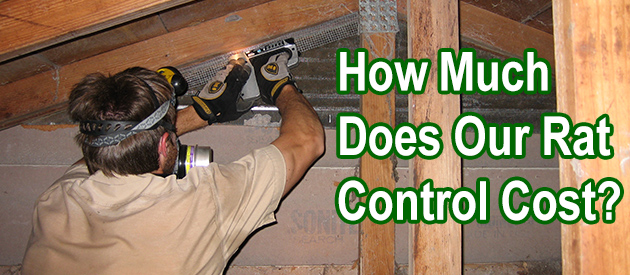Oklahoma County, Oklahoma City Rat Control Situation:
Good day. From where are you? I have A LOT of rats in my roof. Traps DON'T work. The rats/mice are moving around in my house as well. I need to get rid of them ASAP. Can you help? I just bought a new house. I called a guy listed on your website, and he came out right away, which I appreciated very much. He said I had attic rats and set 2 traps. He said there were mice up there too. A friend told me that rats don't cohabitate with mice. Is that true? Also, after reading your website, it says to block all entrances first before trapping, so was wondering why he would set traps first? Thank you!
My husband and I have been dealing with mice in the attic and walls of our bedroom of our new house for about a month now. We have blocked all entry points (to our knowledge). We are currently using glue traps. We tried snap traps, but they kept eating the peanut butter off them without setting them off. We have caught 5 mice with the glue traps. I haven't been waking up to scratching in the walls for about a week. So I'm optimistic we finally blocked everything off. But how do you know when they are completely gone? We have been catching them in the attic, but I can only hear them when they are gnawing in the walls. We haven't ventured far into the attic, since there's no floor. How would you suggest going in there and cleaning? Any information will help. I'm trying to nip this in the bud before it becomes an infestation. I had rats about 2 years ago, and I believe I got rid of them. But I think there are still feces and urine in the attic (about 1700 square feet). I would like to have it cleaned up but was just quoted a price that is out of my range. There is no insulation in the attic. How much should I expect to pay for this?
Oklahoma City Rat Control Tip of The Week
How To Identify Rat Feces And Where Is It Found?
Dark Brown In Color:
You can recognize the look of rat droppings for their dark brown color. Unlike other animals that have darker feces, rats have a darker brown that does not border upon black.
The Shape:
The shape is often spindle and tapered to be less conspicuous. Most rats have a spindle shape for their feces and the pieces will be no larger than a grain of rice.
The Volume:
Each rat can produce up to 40 droppings in a single evening and this can mean that you are likely to find a series of piles across your home especially if you are facing a larger rat population. As you continue to identify the look of rat feces across your home, you are going to notice piles and likely find rats nearby.
Keep An Eye Out For Rub Marks:
Rub marks are another common sign that you have rats in your home. Rats naturally have grease or dirt on their body and because of their poor eyesight they often leave a series of smudges across your home. The darker marks show areas where the rats are regularly moving throughout your home and potentially entering into areas like the walls. If you started to notice various areas where there could be marks and feces, this offers an excellent chance that you could have a rat inside your home.
Be Careful While Cleaning:
Rats carry a series of diseases and it's very important that you are able to clean up any feces that you find to prevent the chance that a family pet will get into it or that you could be exposed to potential diseases.


